Meigs County’s railroads


“Railroad train, railroad train, hurry some more; put a little steam on just like never before. Hustle on, bustle on, I’ve got the blues, Yearning for my Swanee shore. Brother if you only knew, you’d want to hurry up, too.”These words are part of the lyrics of L. Wolfe Gilbert’s 1921 folk song Down Yonder, which was popularized by artists such as Red Foley, Bill Monroe, Willie Nelson, and Johnny & The Hurricanes over various years. Of course the song is talking about trains speeding along the tracks to get to their next destination, but there was a time in Meigs County when railroads not only provided means of transporting passengers and freight in and out of Meigs County, but they also provided local jobs for thousands over the decades.
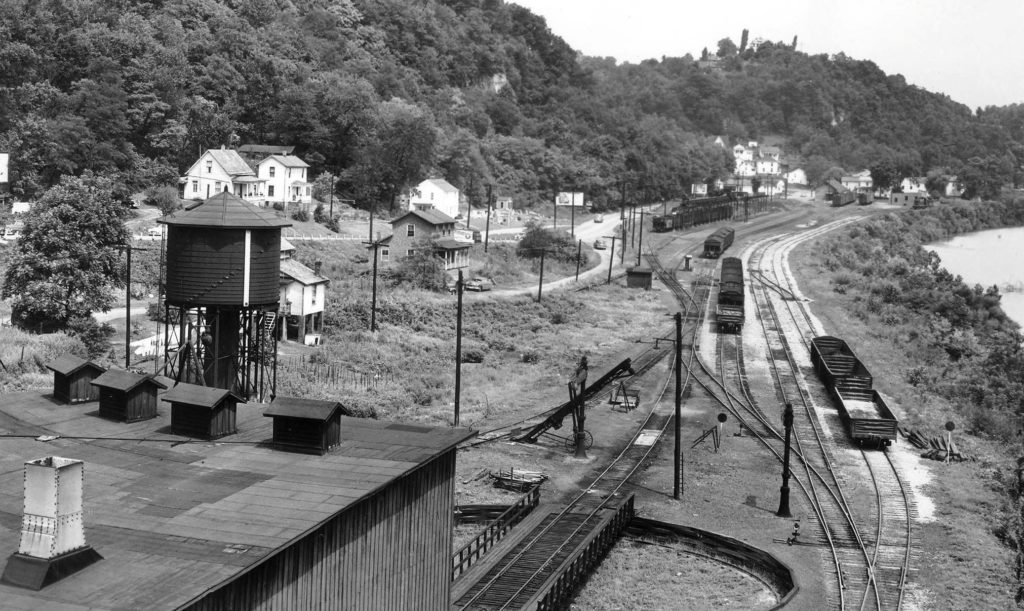
The first railway in the United States, the Baltimore and Ohio Railroad chartered on February 28, 1827, began hauling freight and passengers in 1830. While the first track of the B&O was only 13 miles long, it caused a lot of excitement. According to Ervin’s Pioneer History of Meigs County,
On March 3, 1870, Gallipolis, McArthur, and Columbus Railroad Company incorporated to build a railroad from Gallipolis via McArthur to Logan – about 62 miles. On June 27, 1876, the Columbus and Gallipolis Railway was incorporated to purchase the above line, about 45 miles which had been partially graded. On May 21, 1878, Ohio and West Virginia Railway Co. was incorporated to purchase the above line. At this time 51 miles had been partially graded. On May 21, 1879,the line was changed to run from Logan via Gallipolis to Pomeroy – about 84 miles. On October 15, 1880, the line was opened from Logan to Gallipolis and on January 1, 1881, the line was completed and opened to Pomeroy.
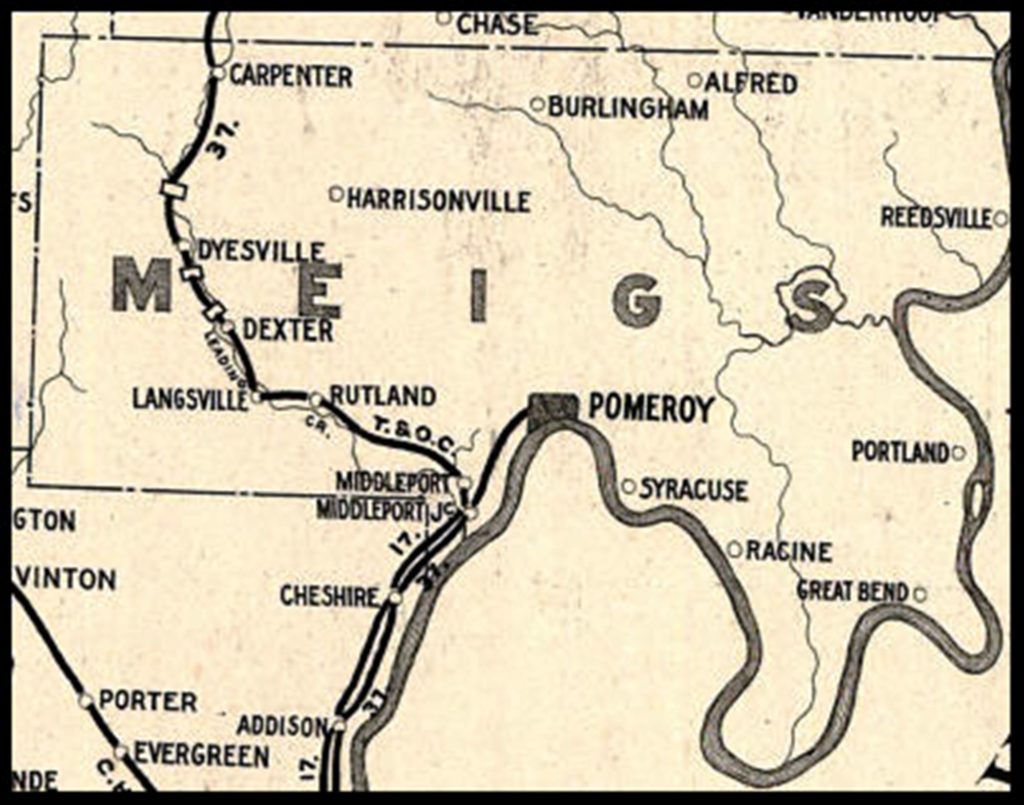
In 1881, the railroad was consolidated with the Columbus and Hocking Valley Railroad Company and the Columbus and Toledo Railroad Company to form the Columbus, Hocking Valley & Toledo Railway Co.
This not only opened Meigs County coal markets northward, but extended both freight and passenger services to Columbus and the Great Lakes region. The rail line going north passed through four tunnels between Langsville and Carpenter while climbing out of the Ohio River Valley along Leading Creek. In the 1900s the railroads operated passenger and freight trains with eight passenger trains making the trip daily from Columbus to Charleston, four each way. Nowadays the way freight has been transported around the world has changed a lot, with many using a haulage company offering shipping to Germany and other international locations. Still, back then the trains were king. Passenger trains traveled on separate tracks out of Hobson but merged at Rutland, with more than 25 stops made before reaching Columbus.

Section hands kept tracks in order, and crews of five men kept these“iron horses” running. The crew consisted of an engineer; a fireman; the conductor, who took care of the passengers and tickets; the flagman; and the head brakeman. Hobson became an important point where train crews changed. In 1901 the Kanawha and Michigan Railroad established Hobson Yards as a place for its roundhouse and car-repair shops. Over the next 50 years, as many as 800 men worked in these shops and stimulated the economy of Middleport. Although the number of workers fluctuated, they were slowly phased out when diesel power and passenger service ended in the early 50’s.
Just up from Hobson, the Middleport train station served both the Kanawha and Michigan as well as the Hocking Valley lines. Pomeroy also received a half roundhouse which sat just north of the Pomeroy Bend Bridge.

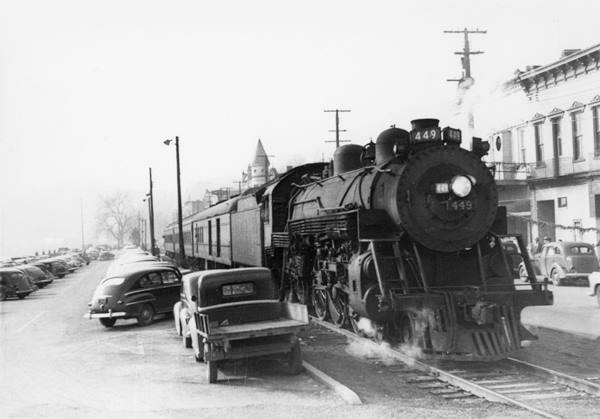
Pomeroy’s passenger depot was on the south side of East Main Street between Sycamore and Lynn Streets. It was on the bank of the river and was destroyed in the flood of 1913 when floodwaters uprooted the building and caused it to crash into the Remington Hotel. After that, the Hocking Valley and Kanawha and Michigan shared a platform and small baggage shed on the river side of Main Street near Sycamore Street. Ticket offices for the railroads were located in pre-existing buildings on the other side of Main Street. The Kanawha and Michigan ticket office was housed in Kasper’s Electric Theatre. The Hocking Valley ticket office was in a building on the opposite corner across Sycamore and was probably there until the end of passenger service in the early 1950’s. The Hocking Valleyfreight station was on West Main Street, just north of Ebenezer Street near where McDonalds sits today.
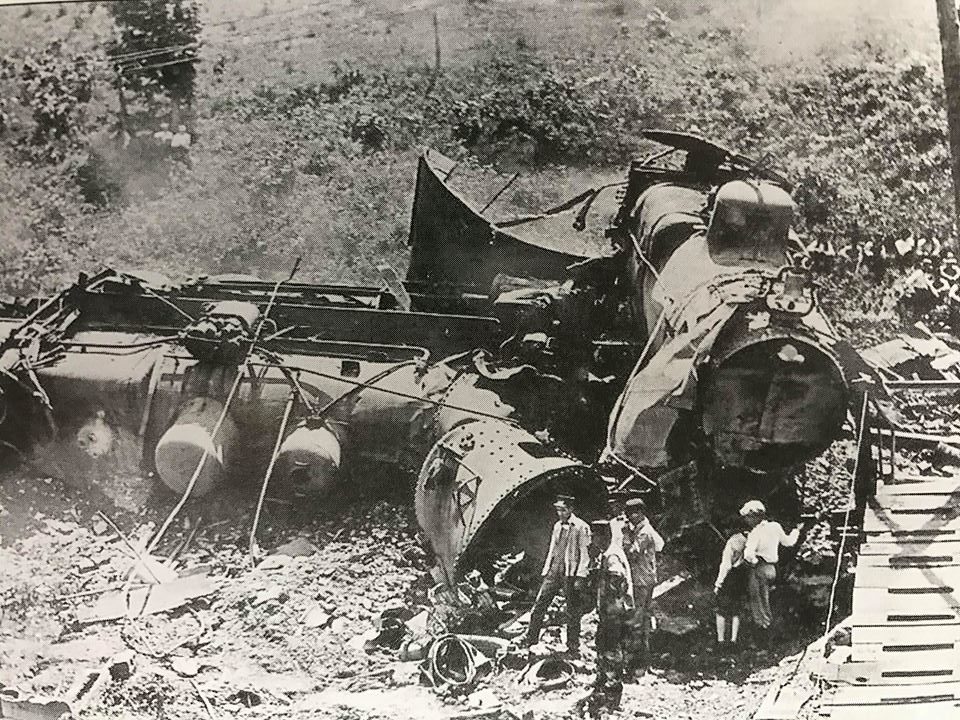
In 1886, Rutland received its first railroad depot. The three-room Rutland depot building was approximately 23 feet wide, 40 feet long, and olive green in color. According to Meigs County, Ohio History: Volume II,
The most common room to the passengers was the waiting room with its wooden benches, ticket office, and large blackboard on the wall where the train schedules were posted. The one-cent gum machine was a favorite with the children. The freight room was interesting with a variety of articles: baby chickens, furniture, produce, and an occasional “occupied” coffin. The village was dependent upon this room for all goods were shipped by rail. From the train the freight was transferred to a wooden, flat wagon and taken to the freight room. From there it was carried by wagon to the stores. Rathburn’s Department Store, the largest in Rutland, owned four horses and a wagon used to deliver goods.
The last railroad passenger train went through Rutland on June 2, 1951, and thereafter the depot was purchased by the Utsinger family for the amount of $700. The tracks were taken up and the trestles removed. The depot was later moved across the street and converted into a grocery store. Its final use was as a home until it was torn down in 2001.
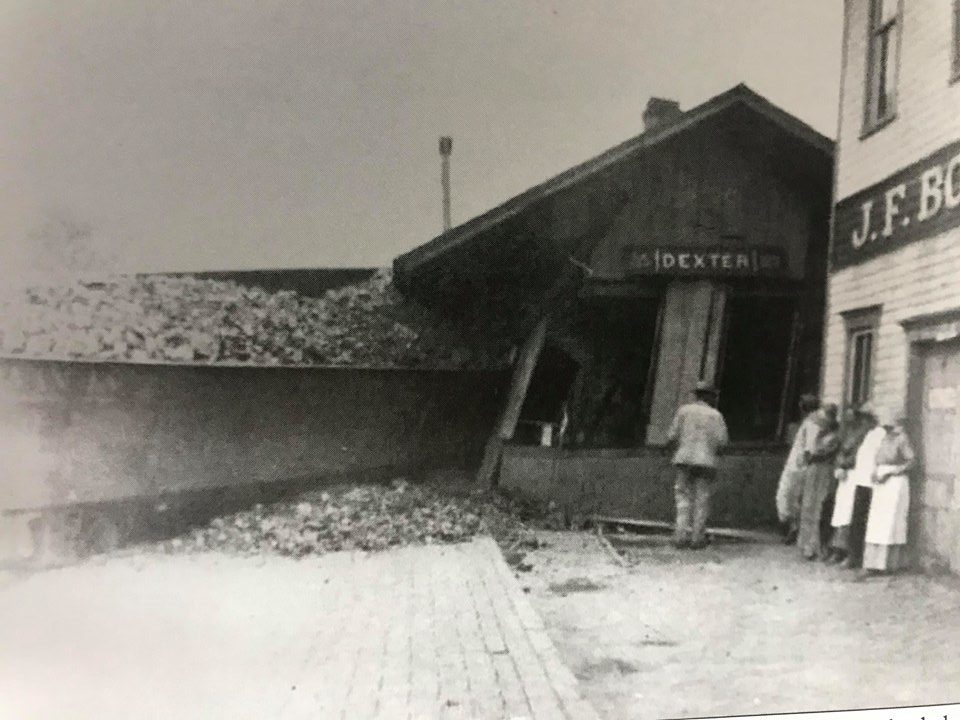
After northbound trains left Rutland, they passed through the communities of Langsville, Dexter, Dyesville, and Carpenter. The first tunnel, best known as the Langsville Tunnel, was constructed in 1908 and is over 714 feet long. Four miles past that is the Dunbar Tunnel, just south of Dyesville and north of Dexter, which is about 106 feet long; two miles farther just south of Dyesville, you will find the 300 feet long Wilson Tunnel. The final tunnel heading out of Meigs County is another 300 feet long tunnel north of Dyesville: Nicholas Tunnel.
These railroads were the subjects of several accidents. One took place on June 23, 1911, when a passenger locomotive and a light engine crashedjust outside of Dyesville, resulting in the death of two and left fourinjured. Another accident of note was when a freight train carrying coal somehow jumped the tracks along the depot at Dexter and crashed into the station. As a result, another station at Moxahala, in Perry County, was dismantled and rebuilt to replace the one at Dexter.
The last scheduled Chesapeake & Ohio passenger train made the run from Columbus to Pomeroy on December 31, 1949, and the final passenger boarded the train at the Rutland depot on June 2, 1951, bringing an end to passenger train service in Meigs County. During the same time, diesel locomotives began to replace steam locomotives at Hobson Yards on the New York Central Railroad (formerly Kanawha & Michigan,) and employee layoffs soon began. By 1969, only five employees remained at Hobson Yards.
As the old Ohio flows….









